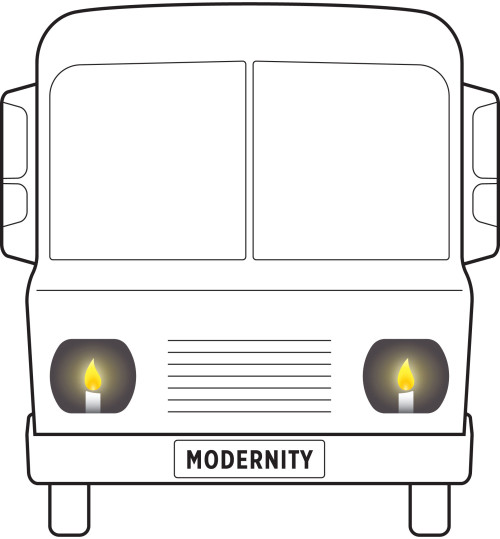Difference between revisions of "IMAGES"
| Line 6: | Line 6: | ||
As a practical message, this image suggests that the ways of creating and sharing information we have inherited will not fulfil the purposes we now urgently need to take care of, notably the purpose of illuminating the way. By designing instead of inheriting what we do with information, suggests this image, we can now make the difference between a hazardous ride into the future, and using our technology to take us to places or conditions where we may justifiably wish to be. | As a practical message, this image suggests that the ways of creating and sharing information we have inherited will not fulfil the purposes we now urgently need to take care of, notably the purpose of illuminating the way. By designing instead of inheriting what we do with information, suggests this image, we can now make the difference between a hazardous ride into the future, and using our technology to take us to places or conditions where we may justifiably wish to be. | ||
| + | </p></div> | ||
| + | <div class="col-md-4"> [[File:bus-ideogram.jpg]] <br><small>Bus with candle headlights.</small></div> | ||
| + | </div> | ||
| + | <div class="col-md-2"></div> | ||
| + | <div class="col-md-10"><p>In an academic or fundamental sense, the bus metaphor is pointing to an epistemological stance where information is no longer considered an objective image of reality, but as a part of this reality, or a system within a system, whose purpose is to fulfil certain specific roles. Under this epistemology, the creative acts to reconfigure what we do with information become basic research – as “the discovery of natural laws” have been in the traditional sciences. | ||
| − | + | The bus metaphor further points to the necessity of what we are calling systemic innovation, where we apply our creative capabilities, and our technology, to fulfil the purposes that must be served, rather than to reproduce the habitual practices and ways of working. The bus points to the need to turn our basic institutions or socio-technical “candles” into “lightbulbs”, and to the opportunity to invent and create on this larger, systemic scale. By doing that, suggests the bus metaphor, we may make a similar difference in the ream of our institution as the conventional innovation made by designing technical objects, since the age of the candle.</p></div> | |
| − | |||
| − | |||
| − | |||
---- | ---- | ||
Revision as of 16:40, 5 June 2018
FEDERATION THROUGH IMAGES
The bus with candle headlights
The bus represents our technologically advanced and fast-moving civilisation. The candle headlights represent the way information is created and used, which we have indiscriminately inherited from the past.
As a practical message, this image suggests that the ways of creating and sharing information we have inherited will not fulfil the purposes we now urgently need to take care of, notably the purpose of illuminating the way. By designing instead of inheriting what we do with information, suggests this image, we can now make the difference between a hazardous ride into the future, and using our technology to take us to places or conditions where we may justifiably wish to be.
In an academic or fundamental sense, the bus metaphor is pointing to an epistemological stance where information is no longer considered an objective image of reality, but as a part of this reality, or a system within a system, whose purpose is to fulfil certain specific roles. Under this epistemology, the creative acts to reconfigure what we do with information become basic research – as “the discovery of natural laws” have been in the traditional sciences. The bus metaphor further points to the necessity of what we are calling systemic innovation, where we apply our creative capabilities, and our technology, to fulfil the purposes that must be served, rather than to reproduce the habitual practices and ways of working. The bus points to the need to turn our basic institutions or socio-technical “candles” into “lightbulbs”, and to the opportunity to invent and create on this larger, systemic scale. By doing that, suggests the bus metaphor, we may make a similar difference in the ream of our institution as the conventional innovation made by designing technical objects, since the age of the candle.
Connecting the dots
The Knowledge Federation logo suggests that the purpose of our initiative is to ‘connect the dots’ — to join disparate insights and results to create overarching higher-level insights, which provide meaning, and guidance and orientation.

